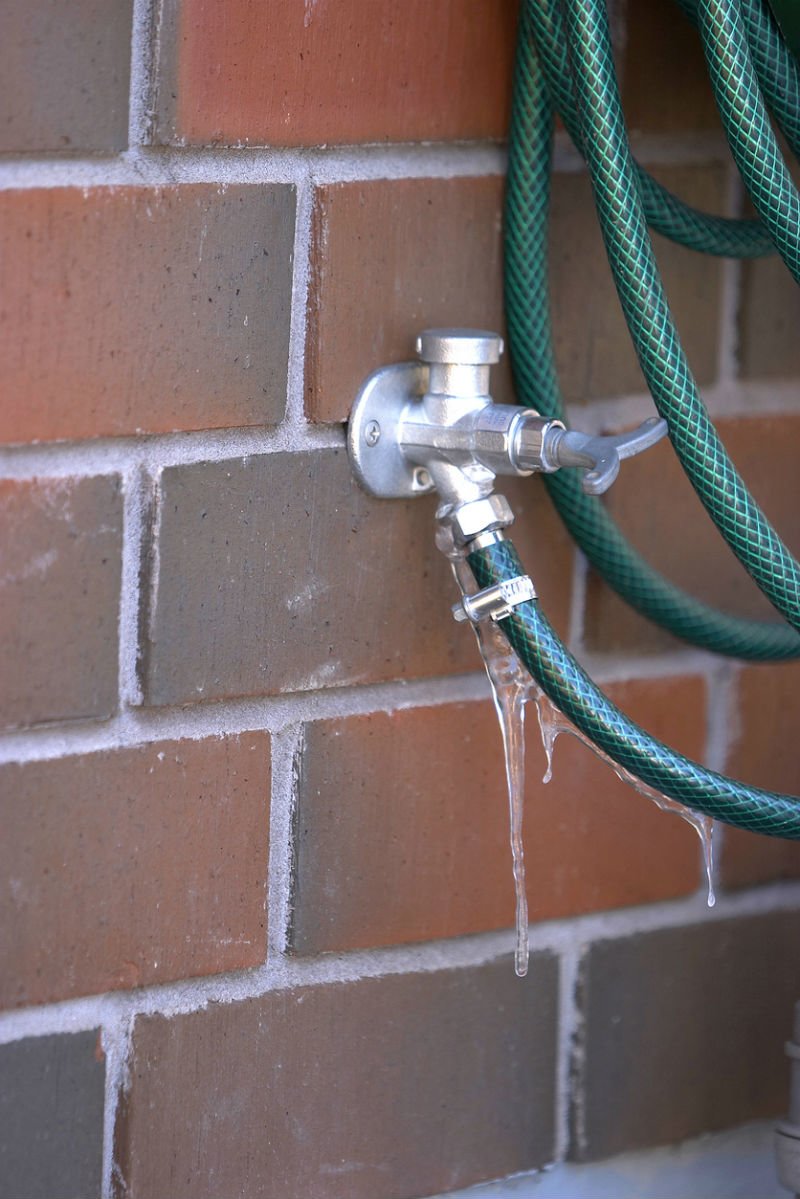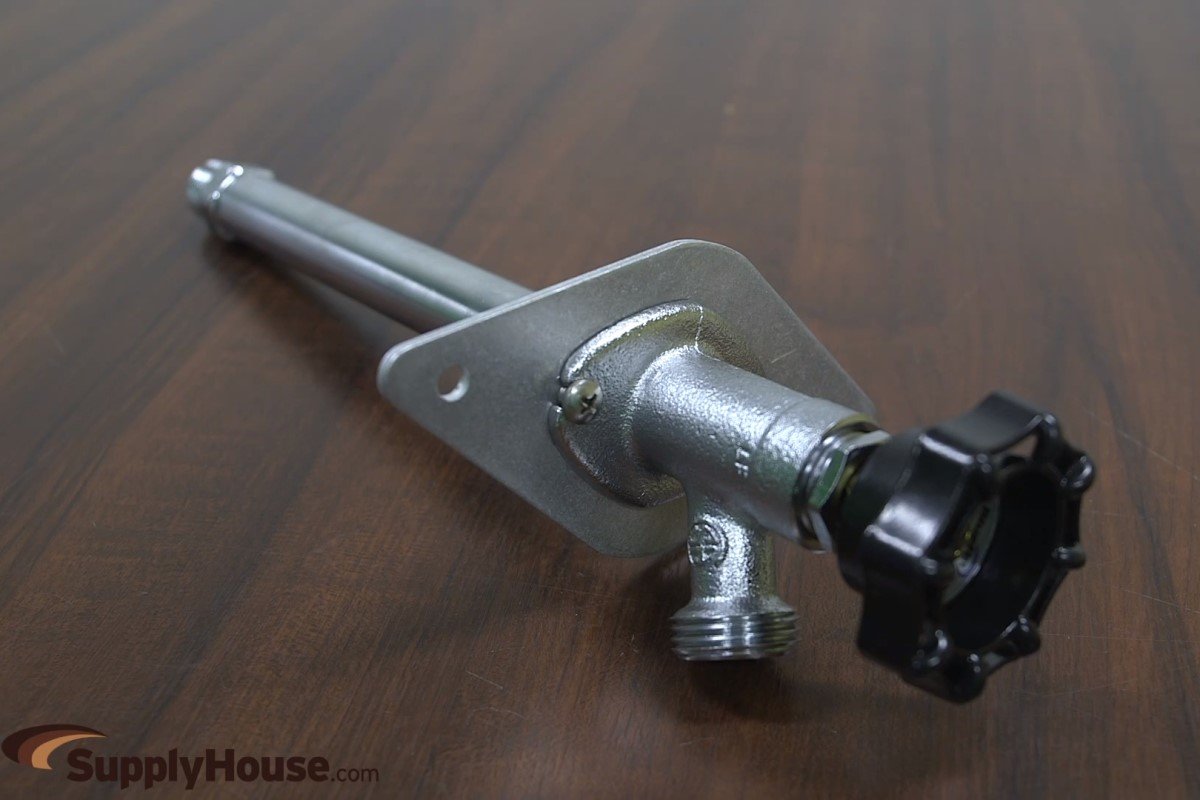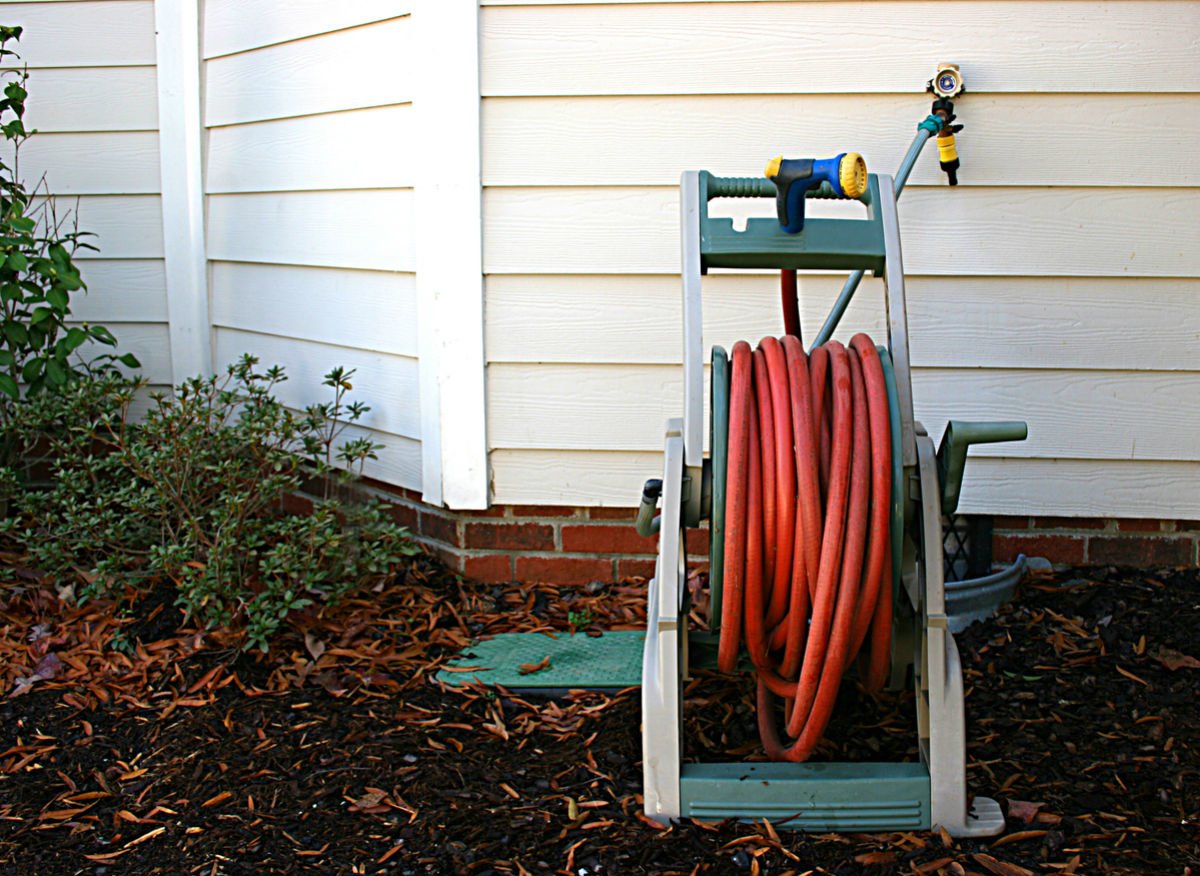We may earn revenue from the products available on this page and participate in affiliate programs. Learn More ›
From time to time, homeowners forget to shut off the water supply to an outdoor faucet when they’re winter-proofing the home. Unfortunately, this simple oversight can have disastrous consequences.
Frigid temperatures can cause whatever water remains in the line to freeze and expand, often rupturing the faucet connections and sending water coursing down the inside of the wall. Repairing the damage to flooded walls, furniture, and other possessions can run in the thousands of dollars.
To protect yourself (and your home) from costly water damage this winter, plumbing professionals recommend switching out regular exterior faucets, also known as sillcocks or hose bibbs, for frost-free models. Daniel O’Brian, technical expert for online plumbing retailer SupplyHouse.com, shares the scoop on the solution that starts at $12.

What’s Wrong with Standard Faucets?
A standard exterior faucet features a washer just under the valve, which serves as the shut-off point for the water. When you turn the faucet off, pressurized water remains in the lower part of the faucet and the connecting pipe, where it can easily freeze, causing the fitting to break.
Why Is a Frost-Free Faucet Better?
A frost-free faucet is a hose bibb with a longer rear connection, “essentially a pipe that’s preconfigured to the valve body,” O’Brian explains. The longer rear connection means the internal shutoff valve is located within the walls of the house, where it’s warmer and unlikely to freeze, whereas the internal shutoff valve in a standard faucet is located outside the walls of the house and susceptible to frost. With a frost-free faucet, when you turn the water off the remaining water in the pipe (up to the shutoff valve) drains out so no water is left in the pipe to freeze.
SupplyHouse carries frost-free faucets with pipe connections as short as four inches, such as Bluefin’s 4-inch Frost-Free Anti-Siphon Sillcock, to as long as 24 inches, like this Woodford 24-inch Anti-Siphon Wall Faucet. The length you’ll need will depend on your home’s water pipe configuration and the type of sillcock you’re replacing.
- If you’re replacing an existing frost-free faucet, you’ll want to order the same size.
- If you’re replacing a standard outdoor faucet with a frost-free faucet, order one with the same pipe diameter (½ inch or ¾ inch). The required length of the sillcock extension, however, will depend on the configuration of the pipes inside your basement. For example, if the water supply pipe connected to your old faucet extends 10 inches horizontally inside the wall and then turns downward, you’ll want to order a sillcock with a rear extension less than 10 inches long so it will attach to the water pipe before it reaches the bend.
“There’s peace of mind that comes with reducing the likelihood of a pipe burst at outdoor faucets,” O’Brian says. With a frost-free faucet, he adds, “There’s no need to check outdoor faucets during freezing times of year in cold climates”—something you would have to do with ordinary outdoor faucets to make sure you don’t miss a burst. An undetected burst—an all-too-common scenario when water in a standard faucet freezes and cracks the connections—can result in a small leak or a gush of water. Either one can inflict costly damage before the leak is discovered. Installing a frost-free faucet is a simple way to reduce the risk.
Bonus: An Anti-Siphon Assurance
Most of today’s frost-free faucets also come with an anti-siphon feature to prevent outdoor water from being pulled back into the system in the event of a pressure drop, which can be caused by something as commonplace as an appliance that’s using an excessive amount of water. This feature allows a frost-free faucet, such as Bluefin’s 8-inch Frost-Free Anti-Siphon Sillcock, to operate like a one-way valve that keeps water from flowing backward.
While the anti-siphon feature is not directly related to preventing the sillcock from freezing and breaking, it is a beneficial year-round preventive measure against contamination of a home’s water supply. For instance, if you’ve attached a sprayer containing fertilizers or chemicals to the garden hose, a sudden drop in your home’s water pressure could potentially cause water from the hose to be drawn back into your house. An anti-siphon device prevents this from happening, which is why these devices are now a code requirement on exterior faucets in most communities.
Who Needs One?
All homeowners should check if frost-free faucets are required by code in their community. But whatever code stipulates, those living in regions where winter temperatures drop below freezing, even rarely, should definitely invest in frost-free faucets. Not only will you avoid some potentially hefty repair bills, but, depending on your home insurance policy, you may also get a break on your premiums when you replace standard outdoor faucets with frost-free models.

Installation Advice
Installing a frost-free faucet can be a DIY job, but homeowners who are inexperienced in basic plumbing practices are better off leaving the job to a professional plumber, O’Brian advises. “Pipes generally need to be cut, and the necessary area of the pipe must be depressurized by turning off the water supply and closing any applicable valves,” he explains. In more complex scenarios—for instance, if you’re working with copper water supply pipes—you’ll need to not only cut the pipe but also “sweat” the connection. This technique involves applying flux (a product that promotes bonding of the connection) and then soldering the connection with a torch—and unless you’ve mastered the technique, the connection can leak.
The difficulty of installation boils down to the connection. Frost-free faucets come with a variety of connection possibilities, including push-fit, threaded, and sweat connections, to accommodate whatever types of pipes are found in the house. For example, the Bluefin 12-inch Sweat Frost-Free Anti-Siphon Sillcock features a threaded male end that will connect with a threaded female end, but it can also be attached via a sweat connection. The inside of the threaded end is smooth, which allows insertion of a copper pipe that can then be sweated with a torch.
Keep the following tips in mind when installing a frost-free faucet:
- It’s usually better to use a non-sweat connection, which won’t require any pipe cutting when you repair or replace the sillcock in the future. A sweat connection, however, when done properly, forms a permanent seal that is less likely to leak than push-type or threaded connections.
- Secure the frost-free faucet to the exterior of your house using a mounting plate, such as this Hose Bibb Mounting Plate. The SupplyHouse team recommends a mounting plate because it accomplishes a few important things:
- It secures the sillcock and keeps the pipe from wobbling, which can happen if the screws that hold the sillcock work loose.
- It creates an attractive connection on the wall, leaving no visible hole.
- It helps seal the penetration in the wall to prevent drafts, moisture, and unwanted insects from entering the home.
- Remove the interior stem unit from the sillcock if you’re going to sweat the connection. Soldering a joint requires extremely hot temperatures, and because the shutoff in a frost-free faucet is located near the connection, the heat created during the sweating process could inadvertently damage the rubber O-rings. There’s a screw you can loosen on the outside of the sillcock that allows you to pull the stem out. After sweating the connection, replace the stem and reinstall the screw.
Frost-Free Faucet Care
Installing a new frost-free faucet will protect your property and allow you to breathe a sigh of relief this winter. Once installed, the faucet doesn’t require a lot of care, but you can keep it working great by following these tips.
- Tighten the valve just until the water flow shuts off. An over-tightened valve puts excessive pressure on the gaskets inside the sillcock, which can lead to premature deterioration and leaking.
- Disconnect your garden hose. The point of installing a frost-free faucet is to keep water out of the exterior portion of the faucet. A connected hose that’s full of water keeps the pipe and the faucet itself full of water, which increases the risk of freezing and bursting.
This article has been brought to you by SupplyHouse.com. Its facts and opinions are those of BobVila.com.


